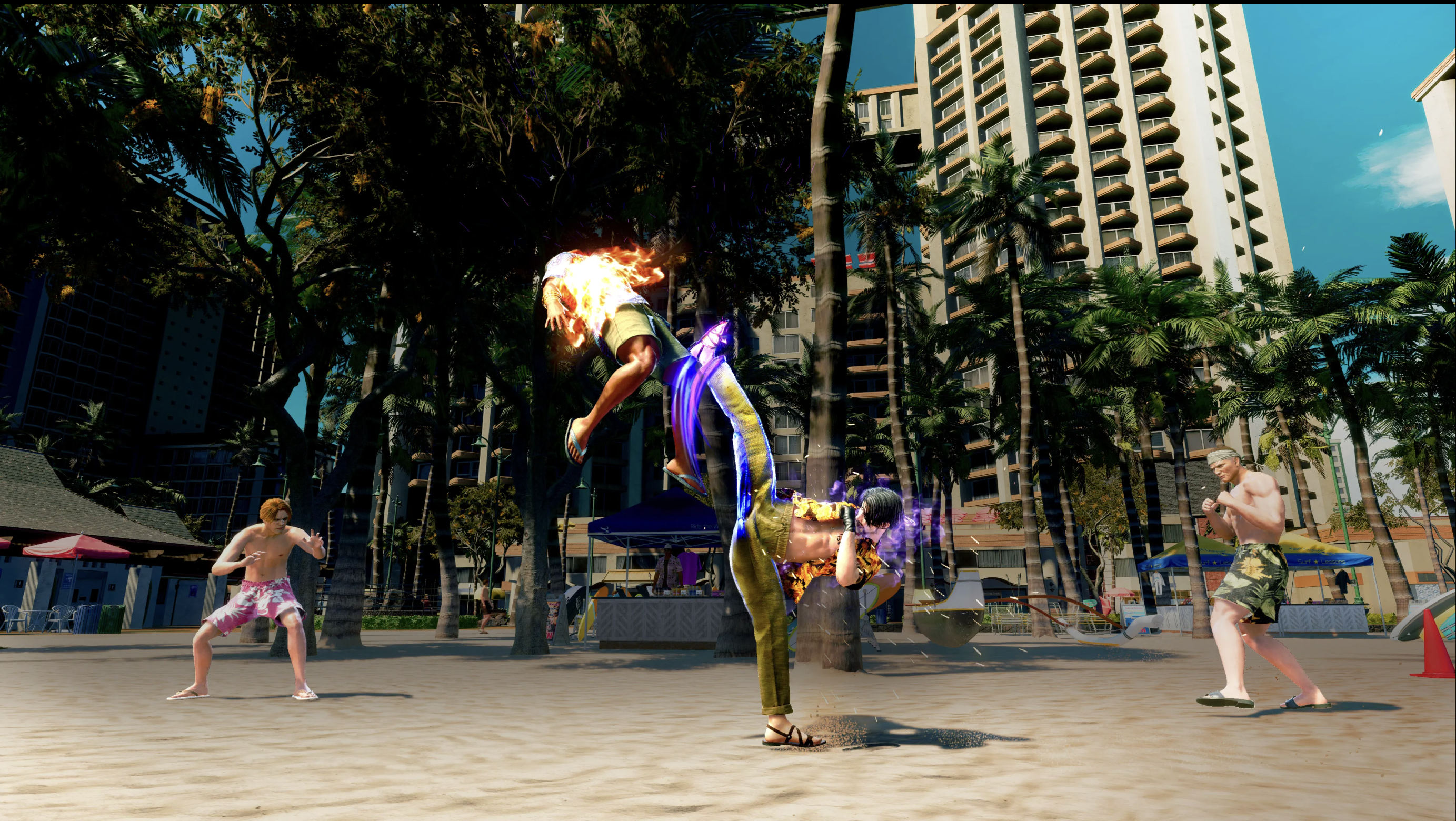When Like a Dragon: Pirate Yakuza in Hawaii was first revealed, it sounded like a fever dream. A combination of Yakuza and pirates wasn’t on my bucket list, and yet, somehow, RGG Studio has once again managed to take the absurd and weave it into an adventure worth taking. While not every element of this new entry is smooth sailing, there’s no doubt that it delivers the signature charm, heart, and action-packed brawling that will bring a smile to your face. Let’s dive in!
A pirate’s life for me
The story kicks off in peak Majima fashion. After an ambush gone wrong, Majima wakes up shipwrecked on the shores of Rich Island, suffering from a classic case of amnesia, leaving him thinking he’s a pirate… Yes it’s absurd but what follows is an adventure that takes him from the beaches of Hawaii to the depths of a sunken city, as he pieces together his lost memories while assembling a crew of misfits.
The writing here is what makes it fun to follow. If you played other games in the franchise, you already know what to expect and Yakuza in Hawaii. One moment you’re engaging in a heartfelt conversation about honor and legacy, and the next, you’re fist-fighting a man in a coconut bra who believes he’s the reincarnation of Captain Cook. That absurd balance is what makes the Yakuza games so unique and entertaining so it’s good to see it’s still part of this Hawaiian editio. The Hawaiian setting is a fresh change of the usual Japanese cityscapes, offering a more lighthearted atmosphere thanks to its sunny vistas and details. From the bustling markets of Honolulu to the eerie ruins of Madlantis(yes, that’s what they named the lost city), each location feels distinct and full of life.
However, not all of Hawaii feels as fleshed out as it could be. While some areas are vibrant and packed with side quests, others feel more like empty stretches of beach with little to do. It’s a minor issue, but one that stands out given how immersive RGG Studio’s cities usually are.
Time for some action
That being said, at its core,Like a Dragon: Pirate Yakuza in Hawaii keeps the series’ signature real-time brawling but adds a piratical twist. Majima has two primary fighting styles: Mad Dog and Sea Dog.
Mad Dog will feel instantly familiar to longtime fans, emphasizing lightning-fast movement, unpredictable combos, and devastating knife strikes. Sea Dog, on the other hand, brings in pirate-inspired combat, allowing Majima to wield cutlasses, flintlock pistols, and even a grappling hook for some acrobatic takedowns. It’s an entertaining addition, though it sometimes feels a little overpowered, as ranged attacks can easily feel a bit too easy to wield.
But what would a pirate game be without naval combat? That’s right, the entry introduces ship-to-ship battles that play like a blend of Assassin’s Creed IV: Black Flag and a classic Yakuza street brawl; if you can imagine such a thing. You’ll steer Majima’s ship, the Goromaru, through open waters, firing cannons and boarding enemy vessels for brutal hand-to-hand combat. While this sounds great on paper, the execution is a bit rough. Steering can feel sluggish, and many of the battles evolve into the same rinse-and-repeat pattern of cannon fire, boarding, and looting. It’s fun at first but lacks the depth to stay engaging throughout the entire game.
Got some more of them side quests?
If there’s one thing RGG Studio knows how to do, it’s buffing their games with a ridiculous amount of side content. Pirate Yakuza in Hawaii is no exception. Karaoke is, of course, present, but this time with sea shanties instead of J-pop ballads. Dragon Kart returns, now with a tropical twist, featuring off-road races through beaches and jungles. Treasure hunting plays a big role too, because what’s a pirate game without some good old-fashioned buried treasure? One of the more bizarre but entertaining new activities is Minato Girls, where Majima helps a struggling dating service by setting up outrageous dates for lonely fishermen. It’s weird, unnecessary, and absolutely hilarious, classic Yakuza side quest energy.
Beyond the minigames, the game is filled with substories that range from the deeper emotional to the utterly deranged. One moment you’re helping a retired sumo wrestler find his missing belt, and the next you’re competing in a surf-off against a gang of hooligans who have somehow weaponized their boards. The variety and unpredictability of these quests are what keep the game world feeling alive and fun to discover.
Conclusion:
Like a Dragon: Pirate Yakuza in Hawaii is a bold experiment that largely pays off. It successfully transforms the series’ trademark humor and action into a pirate setting, with Goro Majima’s larger-than-life persona steering the ship. While naval combat and certain story elements may not hit the mark, the game’s charm, diverse activities, and engaging combat make it worth your time. The mix of classic Yakuza absurdity with pirate lore creates an experience unlike anything else in the series.
For longtime fans, this is another wild adventure full of the chaos and heartfelt storytelling they’ve come to love. For newcomers, it’s an unconventional but exciting entry point into one of gaming’s most consistently entertaining franchises. If you’ve ever wanted to see Majima duel a shark-wielding crime boss while screaming about the power of friendship, then congratulations, this is the game for you.




